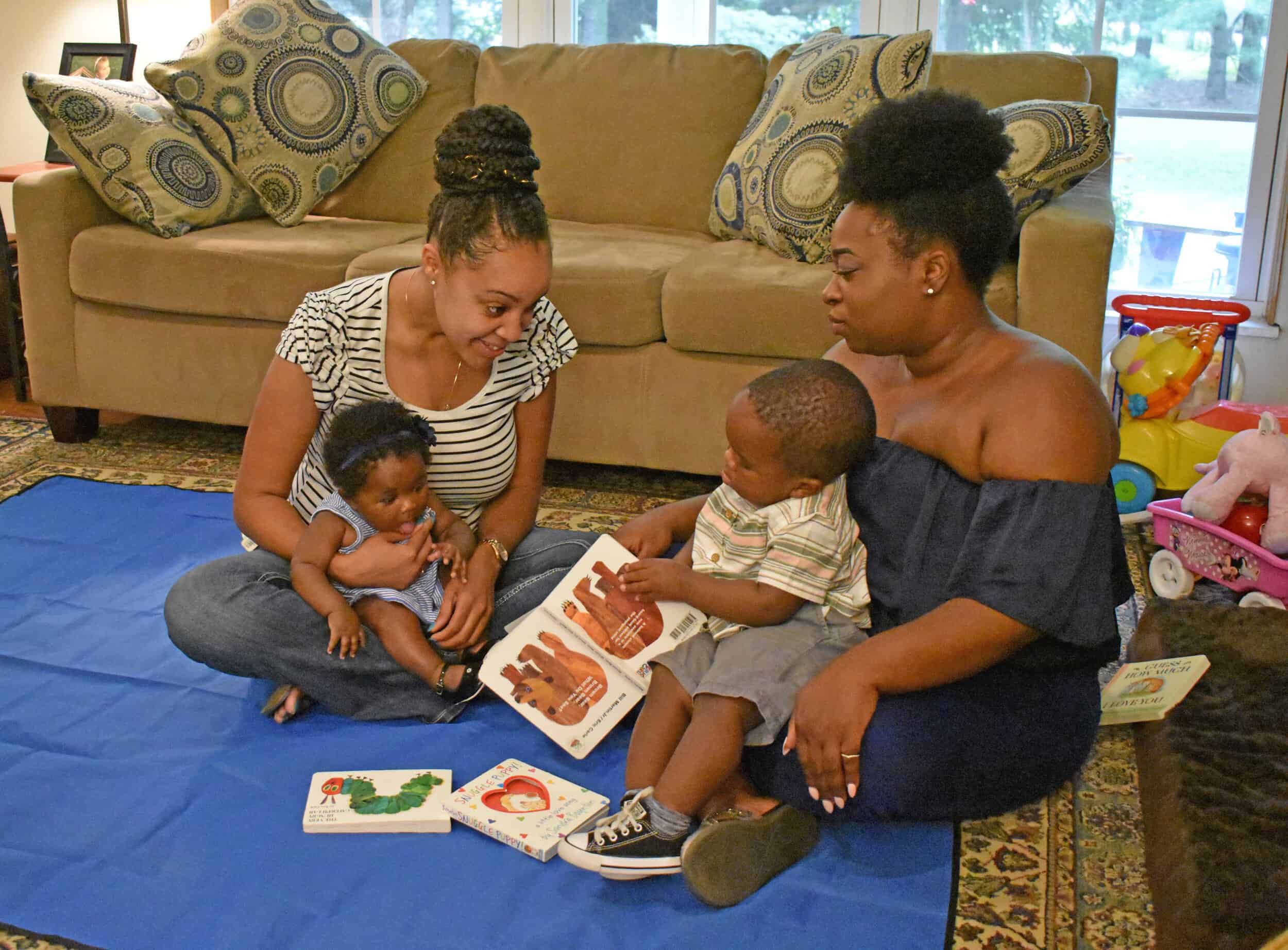
By Aaliyah Samuel
COVID-19 has shed light on the vast inequities that exist across state systems, impacting our most vulnerable families. Early experiences encompass prenatal care and maternal health, early home experiences, and access to social supports.[1] Home visiting programs increase positive birth outcomes for children, improve the likelihood that families have a primary care physician, and decrease rates of child abuse and neglect.[2] As the U.S. Congress and state policymakers establish funding priorities, it is important for home visiting to be included as a key component to support families.
Home visiting is an integral component to helping communities address the many stressors families face and in helping families become self-sufficient. As a two-generation approach, home visitors help to foster safe, stimulating home environments and positive family relationships.[3]
In Washington State where universal home visiting is available, the programs resulted in 53 percent of the families served remaining in the program for at least 12 months and 60 percent of children were assessed for developmental milestones with referrals to additional services as needed.[4] Home visiting programs can specifically help reduce the negative impacts of lost learning time because they provide culturally relevant, timely intervention and support to our most under-resourced families.
Families, especially those living in poverty, are under great stress during the pandemic—including added health risks, unemployment, reduced hours or furlough, and loss of educational opportunities. These realities can exacerbate the risk of vulnerability for young children and school-age students devoid of external resources.

During an uncertain time, home visits – which include virtual visits by phone or computer – from trained educators can provide stability and access to resources and services necessary to survive and withstand financial and environmental challenges. Home visiting programs are used by states and localities to provide information and services to both expectant and established families to improve early learning experiences.
Early experiences and relationship-building within the home are transferable skills to classroom settings and are crucial to academic and social readiness for the youngest learners. Through home visiting, children and parents can create a strong foundation for lifelong learning and success. According to one young mother in Illinois, a home visitor, “taught me how to stimulate [my son’s] brain by talking constantly and giving him different things to play with.”[5]
As part of their role, home visitors also monitor child development—this includes progress in learning and social skills. When issues such as domestic violence or housing problems arise, home visitors can be a positive resource in supporting the family’s well-being. Professional home visitors can provide tele-visits, phone calls, and text messages to monitor progress and drop-off materials while physically distancing themselves. Based on two-thirds of affiliates reporting, Parents as Teachers has conducted more than 160,000 video and teleconference visits nationwide since mid-March.
Because of the steep learning losses children are facing due to the pandemic, families need the support of home visiting as they navigate ways to ensure their children are learning at school. Preliminary data show that the majority of 3rd – 8th-grade students will experience “COVID slide” on top of the normal summer learning loss students typically experience.
Estimates suggest students will return in fall 2020 with roughly 70 percent of the learning gains in reading relative to a typical school year. However, in mathematics, students are likely to show much smaller learning gains, returning with less than 50 percent of the learning gains and in some grades, nearly a full year behind what researchers would observe in normal conditions. The younger the child, the greater their risk of experiencing a sharp decline.[6]
As reopening plans are being finalized and implemented, there are several reasons that funding for home visiting programs is crucial to the health, welfare, and development of children and families. Through home visiting:
- Children in homes at risk of violence can be monitored and supported by other professionals if necessary
- Expectant families can receive in-home information and resources on prenatal care, infant care, and parenting skills
- Connections to social services and resources can be made so that families can weather the pandemic including:
- Information on financial safeguards such as unemployment benefits, student loan forbearance, and stimulus payments
- Information on child care and school closures and reopening and
- Education and job training opportunities for parents and caregivers.
Many of us are sheltered in place with the flexibility to work from home, juggling work and family obligations – including our children’s learning. For families, a home visitor can bridge the gap in access to services and information that not only keep their family together but also shape a foundation to take on life post-COVID-19.

Home visiting is important to maintain stronger families and children and ensure continuity of supports. Whether you are a parent, advocate, policymaker, or someone who believes that all our children deserve a healthy and safe environment to grow and learn, ensuring home visiting programs are a priority in your state is paramount. While we are all doing our part to stay at home and flatten the curve, a home visitor can provide the support a family may need inside that will set them up for success outside of their home when the time comes.
Dr. Aaliyah Samuel is a member of the Parents as Teachers National Center Board of Directors, Fellow to the Center on the Developing Child at Harvard University and Executive Vice President of Government Affairs and Partnerships at NWEA. She has expertise in informing policy agendas, family support programming, literacy and language development, education leadership, developing systems and leading systems-level change.
[1] Washington State Department of Children, Youth, and Families. https://www.dcyf.wa.gov/sites/default/files/pdf/HomeVisitinginWashingtonState.pdf
[2] The Ounce of Prevention. 2020. https://www.theounce.org/what-we-do/programs/home-visiting/
[3] The Ounce of Prevention. 2020. https://www.theounce.org/what-we-do/programs/home-visiting/
[4] The Ounce of Prevention. 2020. https://www.theounce.org/what-we-do/programs/home-visiting/
[5] The Ounce of Prevention. 2020. https://www.theounce.org/what-we-do/programs/home-visiting/
[6] M. Kuhfeld, B. Tarasawa, The COVID-19 slide: What summer learning loss can tell us about the potential impact of school closures on student academic achievement. NWEA Collaborative for Student Growth. 2020. https://www.nwea.org/content/uploads/2020/05/Collaborative-Brief_Covid19-Slide-APR20.pdf

